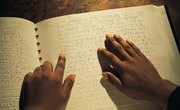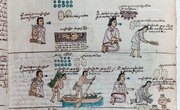Fans of Dan Brown's "The Da Vinci Code" may recall that solving the puzzle of a set of numbers is one of the first of many such tasks in the book. Although, the numbers are jumbled in the book, they are the first eight terms of the Fibonacci sequence. However, this sequence is also the answer to more mathematical mysteries.
Leonardo da Pisa
The Italian mathematician known as Fibonacci was actually born Leonardo da Pisa in 1175 to Guglielmo Bonaccio, a Pisan merchant (it is believed the name Fibonacci is a derivative of the Latin "filius Bonacci" or "son of the Bonacci"). At the time, Europe used Roman numerals for calculations. Complex calculations required an abacus and many merchants had to consult an expert to work out quantities and costs. Young Leonardo traveled with his father through the Eastern Mediterranean and into North Africa. During their travels he became acquainted with Arab and Indian mathematics, and their system of numerals.
The Liber Abaci
When he returned to Pisa in 1202, Fibonacci published his first book on numbers, the "Liber Abaci," or "Book of Calculating," in which he introduced the Arabic numerals 0 through 9. This formed the basis of the decimal system. Compared to the awkward Roman numerals, Fibonacci's new decimal system made addition, subtraction, multiplication and division much easier and introduced a set order for the expression of numbers, as well as the concept of zero or "nothing" into European thought. Only fellow mathematicians understood Fibonacci's book, so he published a simplified version for merchants, which is how it found its way around Europe and revolutionized commerce and banking as well as science. According to Keith Devlin, author of "A Man of Numbers," the foundations of modern banking, insurance and double-entry bookkeeping all originated in 13th-century Pisa due to Fibonacci's introductions.
The Rabbit Puzzle
In the "Liber Abaci," Fibonacci poses this mathematical problem: if a pair of rabbits breeds once a month, and each pair they produce can also breed new pairs at one month old, how many pairs of rabbits will be bred in a year, starting with the one pair? The answer is contained in a sequence that begins 1, 1, 2, 3, 5, 8 and continues, working out to 377 pairs by the end of the year. The principal of the sequence is that it is built by adding two adjacent terms to get the next term to add to the series. Indian scholars had already studied the sequence in the century before Fibonacci published the "Liber Abaci" and he didn't claim it as his own, but because he introduced it to the West, the sequence is associated with him. It was French mathematician Edouard Lucas who named it the Fibonacci sequence in the late 1800s.
The Sequence is Everywhere
Fibonacci's sequence is all around us. In nature, the number of petals on a flower is usually a Fibonacci number, and the spiraling growth of a sea shell progresses at the same rate as the Fibonacci sequence. In art, music and architecture you find a constant called the "golden mean," or phi, which is 1.61803 and corresponds to the ratio between two consecutive Fibonacci numbers -- the higher the numbers in the sequence, the closer they match the golden mean. A rectangle with a ratio of 1:1.61803 has long been considered aesthetically perfect. The front of the Parthenon in Athens, for example, forms a rectangle of those proportions.
Related Articles
References
Writer Bio
Based in London, Eleanor McKenzie has been writing lifestyle-related books and articles since 1998. Her articles have appeared in the "Palm Beach Times" and she is the author of numerous books published by Hamlyn U.K., including "Healing Reiki" and "Pilates System." She holds a Master of Arts in informational studies from London University.











